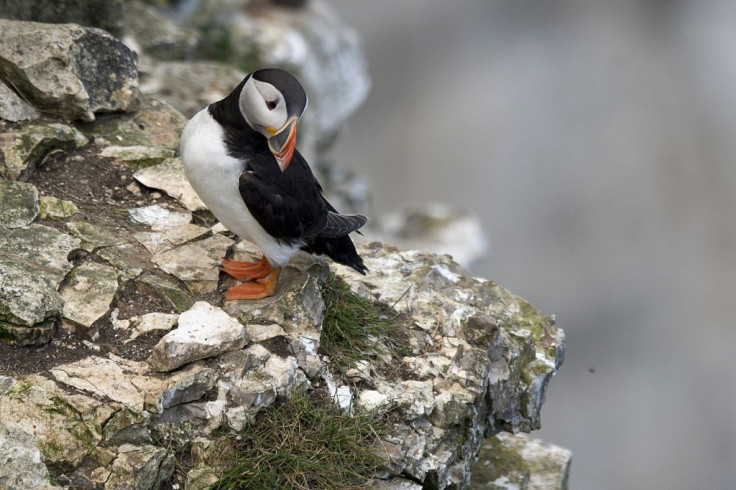Glowing Puffin Beaks? Scientists Discover Bio-Fluorescence Under UV Light

A student from the University of Nottingham, U.K., discovered that the large parrot-like beaks of puffins, birds native to the seas, glow brightly under ultraviolet (UV) light.
Working on a dead specimen of an Atlantic Puffin, endemic to the Atlantic, Jamie Dunning wondered if the black and white feathers of the seabird were also bio-fluorescent like that of crested auklets, their close relatives.
He shined UV light on the specimen and found that the beak of the creature, not feathers, glows in orange, just like a bright Christmas tree. “I was so excited," Dunning told National Geographic. "It was completely undocumented."
As the phenomenon was never observed in an Atlantic puffin before, the Ph.D. student was quick to document and submit the observation for peer review. However, he had no idea the finding will take an even more elaborate turn.
Tony Diamond, an ornithologist at the University of New Brunswick, Canada, reviewed Dunning’s paper and revealed he too spotted the same phenomenon in puffins years ago, but couldn’t document those findings. Diamond’s bio-fluorescent specimen had also given an orange glow like Dunning’s and the two agreed to combine their findings.
Though the scientists have submitted their work for public release, the exact use of this feature still remains unknown. They are currently working to better understand this phenomenon, including how and why the seabird might be using it in its native region.
Solving this piece of the puzzle requires them to conduct field experiments on living puffins, something that involves a huge amount of risk. Essentially, if UV light is shined towards living, breathing seabirds, their eyes can get damaged, leaving them with an impaired or nearly impaired vision for life.
However, the researchers have found a solution to that problem — yellow-colored protective glasses designed specifically to protect the birds’ eyes. They are working with researchers from the University of London to produce the glasses and continue the study.
Bio-fluorescent Animals
That said, it is worth noting that this is not the first animal to emit a beautiful glow under ultra-violet light. According to the National Geographic report, scientists have identified more than 180 known bio-fluorescent species, with many being sea creatures like sharks and corals.
However, all these animals, including the latest addition, do not produce their own light, like in the case of so-called bioluminescent animals. They just absorb blue light, transform it, and re-emit it as a different bright color, most as red, orange, or green. This, as the report noted, could be helping marine animals see and communicate with each other in dimly lit parts of the ocean.
Though the case of glowing beaks remains unsolved, the discovery adds another fun-fact to tell about puffins. These birds spend most of their time at the seas, live for about 20 years on average, and can dive up to 60 meters underwater in search of food.
© Copyright IBTimes 2024. All rights reserved.











